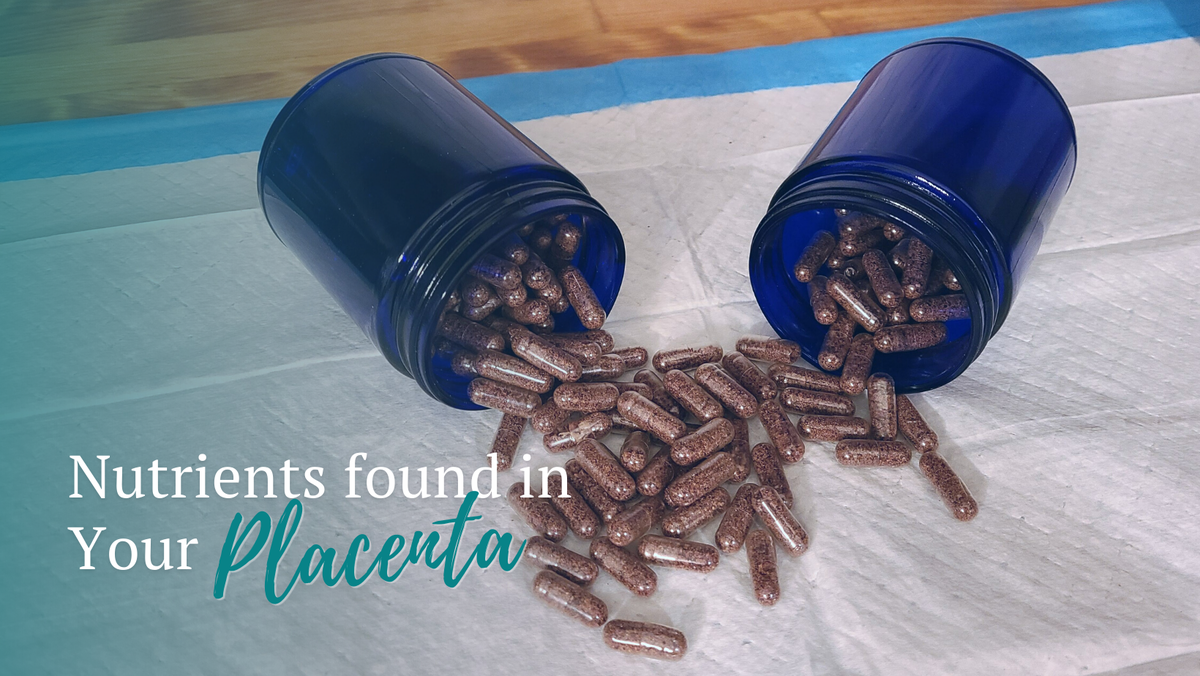The Nutrients Found in Your Placenta

As your baby grows inside you, so too does an organ known as the placenta.
The placenta acts as a transport system for delivering oxygen and other vital nutrients from mama to her growing baby.
Anywhere from five to thirty minutes after your baby is born, your placenta will follow. The delivery of the placenta is called the third stage of labor.
In recent years, many mamas have taken up a practice called placentophagy, wherein after they give birth, the placenta is dehydrated, ground up, and put into capsules for mama to consume.
While placentophagy is not a common practice, many mamas affirm that eating their placenta provided them with much-needed benefits after giving birth. There are even a few scientific studies to back this idea up.
In this post, we will go over the nutrients and benefits that eating your placenta can provide your recovering body.
Why Mamas Choose to Consume Their Placenta
Although not a common practice, many mamas choose to keep and consume their placentas.
This is not a new practice. Placentophagy derives from ancient Chinese medicine where the placenta was consumed to treat infertility.
Today, many mamas report less post-partum depression, a higher pain threshold, and a boost in energy after consuming their placenta.
A 2013 study found that of 189 women who consumed their placenta, 40% reported improvement in postnatal mood. This improvement of mood and energy was also reported in detail by Elizabeth Stark of Babble.com, a magazine for new and expecting mothers.
Other women have reported that the consumption of their placenta increased the amount of breast milk they produce. This is a huge benefit for mamas who worry that they are not producing enough breastmilk to support their baby.
The Nutrients Found in Your Placenta
The placentas contain many nutrients that help the baby grow in the womb.
Some of these key nutrients include fiber, protein, and potassium. New mamas are often lacking in these nutrients, so placenta consumption can help supplement her diet.
Let’s break down what some of these nutrients do to help mama’s body.
-
Fiber. Fiber helps with the overall digestive process. It alleviates constipation and ensures that the digestive process is as smooth as can be.
-
Protein. Protein helps build muscle and provides an infusion of energy. Many mamas are exhausted for days or weeks after giving birth. The placenta protein can help them build energy back quickly.
-
Potassium. Potassium helps move nutrients into the cells and waste products out. In short, it makes energy move through your body more efficiently.
In addition to these nutrients, placentas are rich in hormones such as estradiol and testosterone.
Your Placenta and You
The placenta is typically thrown away as medical waste after delivery, however, your doctor or midwife will let you keep it at your request.
If you do choose to consume your placenta after you give birth, make sure you have a knowledgeable doula or midwife to process it into capsules for your use.
Contact Stork Helpers if you are considering having your placenta encapsulated. Tamara is highly experienced at placenta encapsulation and will ensure that your placenta is easily consumable to provide you with the maximum benefits.

